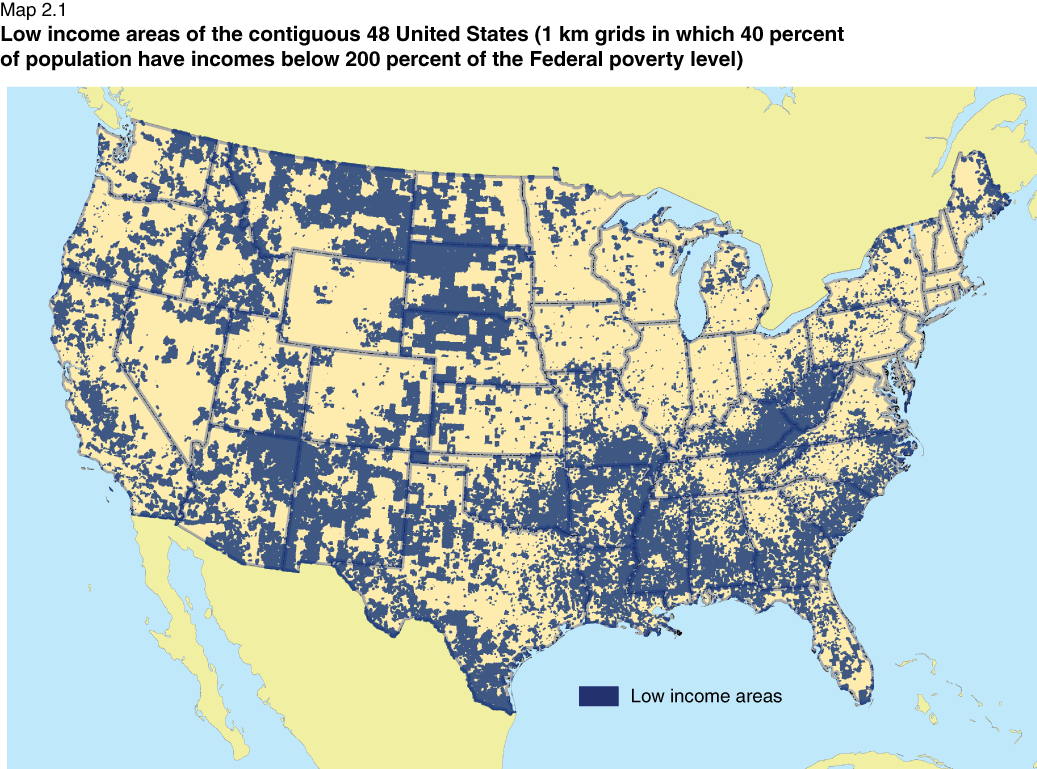According to the CDC, the Centers for Disease Control and Prevention, part of the Department of Health and Human Services, food “deserts are areas that lack access to affordable fruits, vegetables, whole grains, low-fat milk, and other foods that make up the full range of a healthy diet.” The USDA (United States Department of Agriculture) has a map, or atlas, depicting food choices and demographics of the U.S. by county. To access the map, click on Your Food Environment Atlas.
In addition, the U.S. Department of Agriculture published in 2009 a report on access to affordable and nutritious food:
- 5.7% of households in the U.S. do not have access to the kinds of foods they wanted
- Food prices are 10% lower at supermarkets than smaller foodstores
- Food “eaten at restaurants is less affordable due to its higher per unit cost relative to foodstores and other retail food outlets.”
- “Median distance for low-income individuals is about 0.1 of a mile less than for those with higher income, and a greater share of low-income individuals (61.8 percent) have high or medium access to supermarkets than those with higher income (56.1 percent).”
- Ethnic “and racial minorities have better access to supermarkets than Whites.”
- Out of the entire U.S. population, between 2.3% – 5.5% “of all households may be outside of a walking distance to a supermarket and lack access to a vehicle.”
- The “percentage of households without access to vehicles is higher in low-income areas. Overall, 0.9 million households do not have access to a vehicle and live in low-income areas more than a mile from a supermarket. This represents 3.6 percent of all households in low-income areas. A much greater percentage of households without vehicles in low-income areas is between one-half to 1 mile from the nearest supermarket—1.6 million households, or 6.4 percent of all low-income households.”
Click on the chart below to see an enlarged, clearer chart.

To read the entire report from the USDA, click on Access to Affordable and Nutritious Food—Measuring and Understanding Food Deserts and Their Consequences: Report to Congress. To read additional information on Food Deserts from the CDC, click on Food Deserts.
Sorry, the comment form is closed at this time.